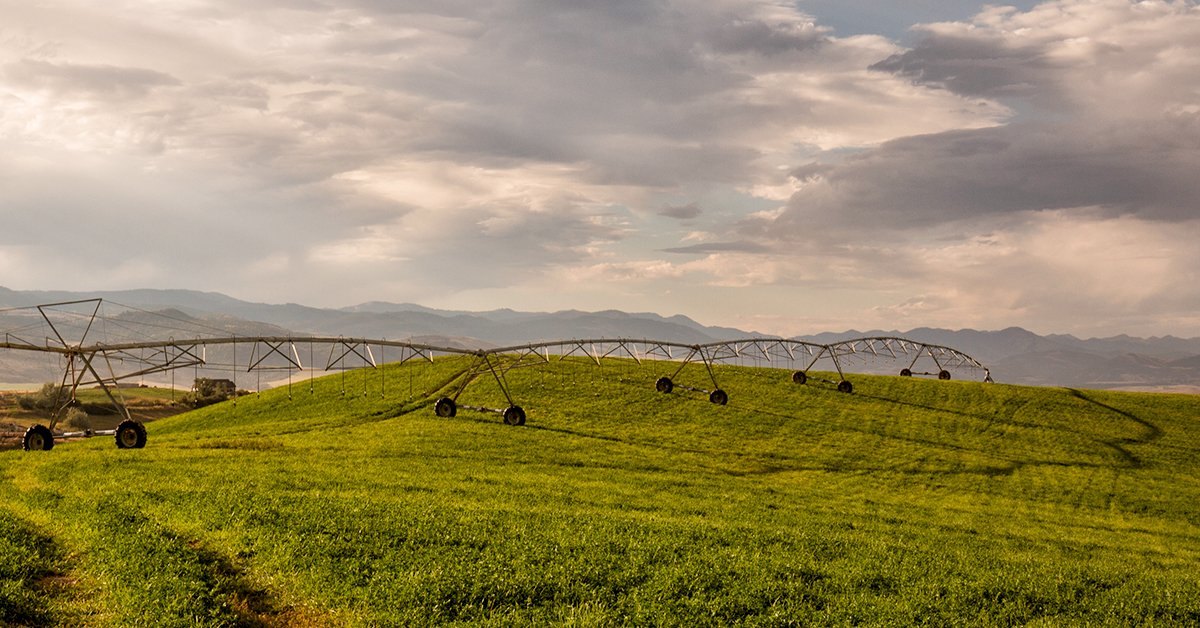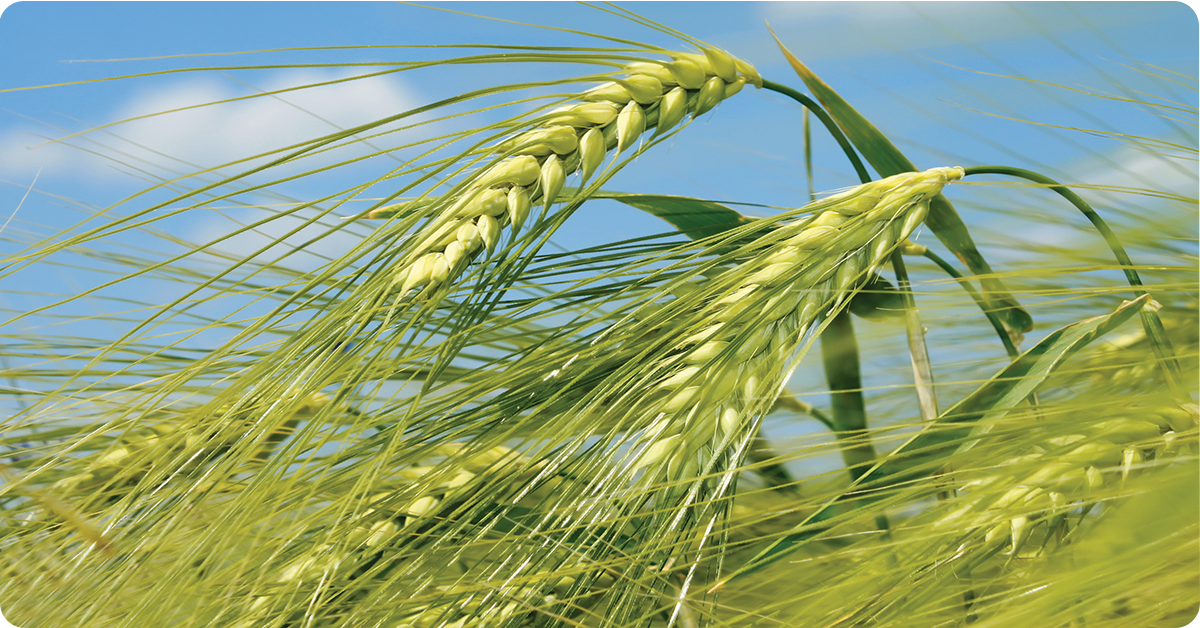
As I write this, it is mid-March, and the SNOTEL report says that Utah is at 88% of normal, according to the latest water supply briefing in Salt Lake City. Snowpack seems to be up from last year, but I know our reservoirs in the eastern Uintas are more depleted than they were at the beginning of 2021. And While I am planning for a similar water year, soil moisture seems to have improved due to fall storms.
It seems as though each year brings its own unique set of challenges, and this year is no different with fertilizer prices surging, supply chain issues, and water supply issues. Most of these challenges are not something that any of us can control individually. But we can control what we plant, how much water we use, how we fertilize, tillage practices, and perhaps look at some new products to help with water preservation and penetration in the soil.
Water Wary
With the water situation not what we hoped for, it’s important to talk about what to plant. When water is limited, we may need to change our cropping program to maximize yields. If you already have an established pasture or alfalfa field, this could be your most productive crop with proper fertilization, even in a short water year.
Droughts are cyclic, occur naturally, and are usually short-lived, compared to our “normal” conditions. Most growers will not want to go to the extreme measures of switching to very drought tolerant perennial crops, such as wheatgrass, because the yield loss would be too high in most cases.
When irrigation water is in short supply for a year or two, the most logical crops to grow are annual crops that require less water. These annual forage crops use less water because they have a shorter growing season and greater water use efficiency. They are quicker to establish than alfalfa or pasture and can be planted quite a bit earlier in the season, taking advantage of moisture from winter thaw and spring storms.
Drought-Tolerant Crops
The best of the common drought-tolerant annual forage crops that we use in our area are listed below according to drought tolerance:
- Fall Triticale: Drought tolerance is high, water use is low, feed quality is low-medium, and yield potential is 3–5 tons per acre.
- Spring Triticale: Drought tolerance is medium-high, water use is low-medium, feed quality is low-medium, and yield potential is 3–5 tons per acre.
- Wheat: Drought tolerance is medium-high, water use is medium, feed quality is medium-high, and yield potential isup to 3 tons per acre.
- Barley: Drought tolerance is medium-high, water use is medium, feed quality is medium-high, and yield potential is 3–5 tons per acre.
- Oats: Drought tolerance is medium-low, water use is medium, forage quality is medium, and yield potential is 3–5 tons per acre.
- Corn: Drought tolerance is medium, water use is high, feed quality is high, and yield potential is high.
- Sorghum-Sudan grass: Drought tolerance is high, water use is low-med, feed quality is medium-low, and yield potential is high. Keep in mind that sorghum is a warm-weather grass and needs to be planted when soil temps are around 60 F, usually around the first part of June.
The grain forages mentioned above, other than corn, have a potential for nitrate poisoning. It is important to keep an eye on soil nitrate levels and fertilize accordingly to manage possible problems.

Adapting Management Practices
If you want to plant alfalfa pasture during a drought or low water year, you will want to adapt your management practices to use your water efficiently.
Go with no-till or minimum-till options to preserve soil moisture. Tillage has a tendency to dry the soil out and therefore wastes water. No-till practices tend to conserve water because they decrease soil disturbance; however, you may need to spray for weeds that would normally be eliminated due to tillage.
Another thing that can be done in a short water year is to use a no-till drill to plant triticale or 3-way into a weak stand of alfalfa or a pasture to increase feed tonnage. Some growers have done this with success, trying to get by until water situations improve enough to establish a perennial crop. The life of your alfalfa stand will be shortened and this should be considered primarily in the last year of an alfalfa stand before rotating it out.
Choosing Fertilizer
I get asked almost daily what type of fertilizer is better, liquid or dry? My usual response would be that a good combination of both would be the best. Put dry fertilizer out in the late fall and go with liquid for any in-season needs. In years like 2021, and 2022 when water looks as if it might be short again, I would go with a straight liquid program. At this point, many of us don't know how much water we are going to be allotted, how long it will be available, and how many cuttings our water will cover.
Liquid Fertilizer is easy to “spoon-feed” to your crops when you have water, and you can apply what you need to feed the crop short term, making multiple applications as you need them. When and if you run out of water, you can stop fertilizing, and you have not wasted much, if any, fertilizer on a crop that will not get more water.
With dry fertilizer, you typically go out at 200 to 300 pounds per acre early in the year, all in one application. This saves money in application costs, but you may or may not have enough water to get you through the crop year, and you have fertilizer on your field that you’ve paid for that possibly won’t be utilized in the shortened season. The money tied up in unused fertilizer could have been used for other inputs on your farm.
There is no single answer as to what is best, and each situation needs to be looked at and evaluated to determine what course of action will return the highest profit.
Additional Aids
I admire the farmers in our area because it’s not always easy to farm here. Our soils can be difficult (high pH, high salts, etc.), we have to manufacture our own rain, and we usually have to add extra inputs to make up for our poor soils. There are additional inputs that can help conserve and utilize water better in our current drought conditions.
Aqua-Drive
Aqua-Drive is a product that has been successful for several years and can help if you have tight soil that water doesn’t want to permeate. It improves the infiltration and penetration of applied irrigation water, and it is formulated to both enhance adhesive tension and relieve cohesive tension in water to minimize the repellency of hydro-phobic soils. It can be applied using liquid spray application equipment or through many irrigation systems. I would definitely recommend Aqua-Drive for tight clay soils.
ProLiferate
Acting as a penetrating humectant soil surfactant, ProLiferate is an exciting new product that I am looking forward to trying out. To understand this product, I think it would be helpful to define a humectant. A humectant will help with water penetration and also help retain and preserve moisture in the soil. This is where ProLiferate shines, and it should have a positive effect to determine what course of action will return the highest profit. .
Aqua-Drive and ProLiferate are terrific products that may have a fit in your operation. Aqua-Drive is great for getting water to penetrate tight soils, and ProLiferate is better for lighter soils that may have a tendency to dry out quickly.
Helping You Face the Challenges
These are just a few tools and suggestions that may help you in the coming growing season. As always, when planning and managing inputs on your farm, reach out to your local IFA crop advisor and let them review the options to best fit your operation.
Discover IFA's Agronomy Services
Written by Kam Abplanalp, CCA, IFA Agronomy and originally published in the IFA Cooperator magazine (vol. 88, no. 2) Summer 2022.
Kam Abplanalp was born and raised in the Uintah Basin. After graduating with a bachelor’s degree in animal science from Utah State University, Kam began working for IFA in 2001 as an assistant manager at the Country Store in Vernal.He obtained his CCA in 2014 and has been aiding local farmers in their fields since transferring to IFA’s agronomy team. When not helping IFA members grow, Kam enjoys being outdoors and spending time with his family.

